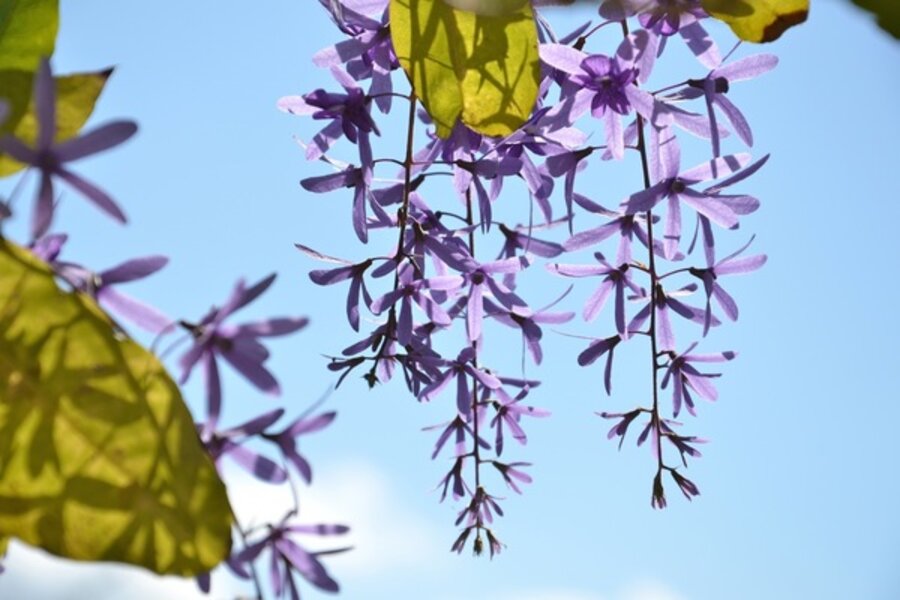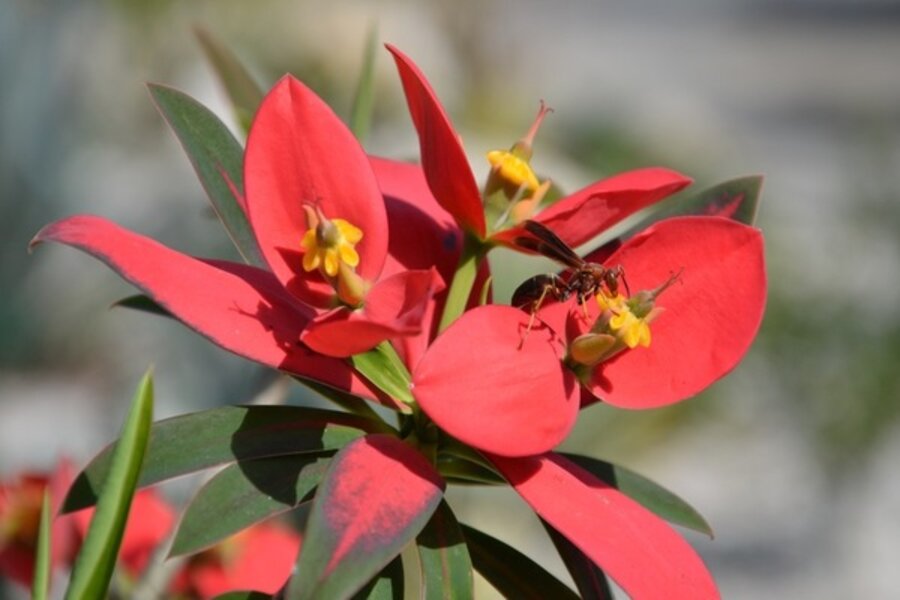Yoga, warmth, and lush greenery in the garden
Loading...
I have alternating memories of my first experience with a yoga class, which was conducted on a balmy winter morning under a teasing sun on the grounds of the Naples Botanical Garden on the west coast of Florida. (Yes, I took yet another trip to get warm. Iowa winters are tough.)
1: I remember attuning my now-bendable body with nature as the violet flower petals of Queen’s Wreath [see first photo above] danced around my head cloudlike amid the verdant splendor.
Or 2: I remember lying in a grassy puddle for an hour, hacking up sandpaper vine (its other name) blossoms after every other studied inhalation. Guess I was supposed to bring a mat. (And not just a mat – a yoga mat.) Who knew?
But the limbering-up was much needed after a few days of sloth on Marco Island, and any event that involves a botanical garden is aces in my book. This one prides itself on being “a place of bliss” and “a state of happiness.” Perhaps with more yogic practice I will one day achieve grace in the garden.
The 170-acre garden is only 20 years old, and received a stunning renovation 15 years later. My favorite aspects were the 2-1/2 miles of hiking trails and the 90 acres of restored native preserve. (Think swamp and scrub.) Almost 300 native species occur naturally on a site just outside the ritzy shopping district.
Other gardens include Florida, Caribbean, Brazilian and Asian landscapes [see second and third photso above; click on the arrow at the right base of the first photo], and also water, children’s, and butterfly gardens. In the Children’s Garden, I especially liked the little garden elf and the sign explaining horticultural “gnomenclature.” Puns and posies. Can’t beat that.
And another thing: I sure wish I had also ventured into the garden the day before as well. They have a puppy day, and visitors are invited to bring their dogs. Never heard of anything like that before. Puns and posies and puppies!
What else I’m into this week: Reading issues of the garden’s magazine.
-----
Craig Summers Black,The Transplanted Gardener, is an award-winning garden writer and photographer who blogs regularly here at Diggin' it. You can read more of what he's written here at the Monitor by clicking here. You may also follow Craig’s further adventures in gardening, music, and rural life on Twitter.







